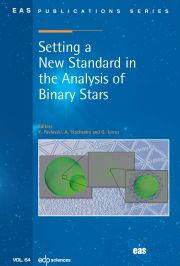Article contents
Performance Evaluation of Nano-JASMINE
Published online by Cambridge University Press: 15 February 2011
Abstract
We report the results of performance evaluation of the first Japanese astrometrysatellite, Nano-JASMINE. It is a very small satellite and weighs only 35 kg. It aims tocarry out astrometry measurement of nearby bright stars (z ≤ 7.5 mag) withan accuracy of 3 milli-arcseconds. Nano-JASMINE will be launched by Cyclone-4 rocket inAugust 2011 from Brazil. The current status is in the process of evaluating theperformances. A series of performance tests and numerical analysis were conducted. As aresult, the engineering model (EM) of the telescope was measured to be achieving adiffraction-limited performance and confirmed that it has enough performance forscientific astrometry.
Information
- Type
- Research Article
- Information
- European Astronomical Society Publications Series , Volume 45: GAIA: At the Frontiers of Astrometry , 2010 , pp. 397 - 400
- Copyright
- © EAS, EDP Sciences 2011
- 1
- Cited by

